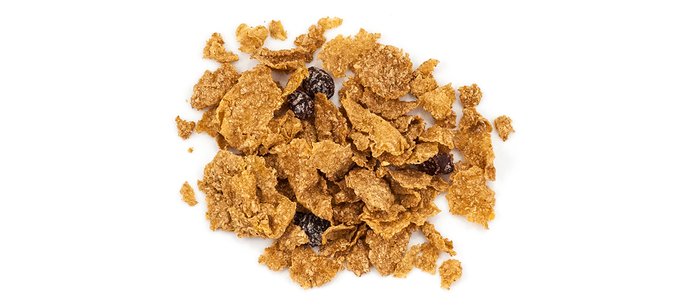The glycemic index (GI) was created in the 1980s to help people manage or prevent type 2 diabetes. The idea is that knowing a food's GI score helps people make good food choices. Since then, the index has also been used as the basis for many weight-loss programs.
The problem with the "GI diet" is that many people don't understand exactly what the glycemic index measures. And that can lead to misunderstandings of how to use it to choose the right foods—especially the right carbohydrates.
I'm here to set the record straight.
The GI-Diet Theory
The glycemic-index diet is based on the idea that too many carbohydrates from the wrong kinds of food can introduce too much glucose in the body. Excess glucose leads to the production of excess insulin, which can lead to dizziness, low energy, and intense hunger, which can ultimately lead to weight gain.
As the theory goes, people who are trying to lose weight should avoid carbs that cause too much glucose to enter their system too fast. These are foods with high GI scores. By choosing carbs that metabolize into glucose more slowly—those with low GI scores—you can avoid the low energy and hunger pangs that derail many a dieter's best intentions.

GI Score Is Not Enough
One problem with the glycemic index, though, is that it doesn't reflect how much actual sugar is in each carb type. In some cases, a carbohydrate with a high GI score may not contain much sugar, but it still causes a rapid rise in blood glucose—and vice versa. GI scores alone don't provide enough information to make good food choices.
Two studies showed the problem with relying on GI score alone. The first, published in the American Journal of Clinical Nutrition, found that relying on the GI to decide which carbs to consume isn't necessarily a good idea—especially when you're trying to lose weight. As part of this 18-month study, more than 200 women were divided into two groups. One group ate a calorie-restricted diet of mostly low-GI carbs (slower-digesting carbs); the other group ate mostly high-GI carbs (faster-digesting carbs). You might think that the "better" carbs—the low GI ones—would speed weight loss. But at the end of the study, there was no significant difference in how much weight each group was able to lose.[1]

Another study, this one published in the American Journal of Clinical Nutrition, compared the effect of high-GI corn flakes to low-GI bran flakes.[2] The conclusion was the same: no difference between bran flakes and corn flakes, this time on their initial impacts on glucose levels following a meal.
In fact, what you might consider the "healthier" bran flakes triggered a slightly faster rise in blood glucose immediately following the meal. It wasn't until 30 minutes later that the rise in blood glucose levels caused by the bran-flake cereal levelled out more (which is what led to bran flakes having a lower GI score than corn flakes).
What Matters Besides GI Score?
If you're thinking of using GI scores to choose carbohydrates for your diet, keep in mind several factors that can affect the way your body processes those carbs. It all goes back to that issue of avoiding the sharp spikes and drops in blood glucose levels and the insulin production they can cause.
First, it's more important to select foods based on their nutrient density (the amount of vitamins, minerals, and fiber they contain per bite) rather than their GI score. And when it comes to weight loss, choose carbs that help you consume fewer calories than you're burning—and in a way that's sustainable.
Second, one way to slow down the release of glucose into the blood is by slowing down your digestion. Finding ways to digest food more slowly reduces the rate at which your body turns carbs into glucose—and reduces those hunger pangs that have you raiding the fridge at midnight.

Protein: Slow down digestion by adding protein to a meal, such as by putting milk on your cereal. This is in part because protein-rich foods stimulate release of a hormone called glucagon, the effects of which are the opposite of those induced by insulin.[3,4]
Fat: Try adding fat to your meal, such as putting peanut butter on bread, to slow digestion.
Keep all of these "adjustments" in mind as you look to the glycemic index to guide your food choices. By making smart food decisions, you can slow down your digestion, reduce your appetite, and still have the sustainable energy you need to be active and lose weight.
Resources
- Sichieri, R., Moura, A. S., Genelhu, V., Hu, F., & Willett, W. C. (2007). An 18-mo randomized trial of a low-glycemic-index diet and weight change in Brazilian women. The American Journal of Clinical Nutrition, 86(3), 707-713.
- Schenk, S., Davidson, C. J., Zderic, T. W., Byerley, L. O., & Coyle, E. F. (2003). Different glycemic indexes of breakfast cereals are not due to glucose entry into blood but to glucose removal by tissue. The American Journal of Clinical Nutrition, 78(4), 742-748.
- Aronoff, S. L., Berkowitz, K., Shreiner, B., & Want, L. (2004). Glucose metabolism and regulation: beyond insulin and glucagon. Diabetes Spectrum, 17(3), 183-190.
- Claessens, M., Saris, W. H., & van Baak, M. A. (2008). Glucagon and insulin responses after ingestion of different amounts of intact and hydrolysed proteins. British Journal of Nutrition, 100(01), 61-69.

